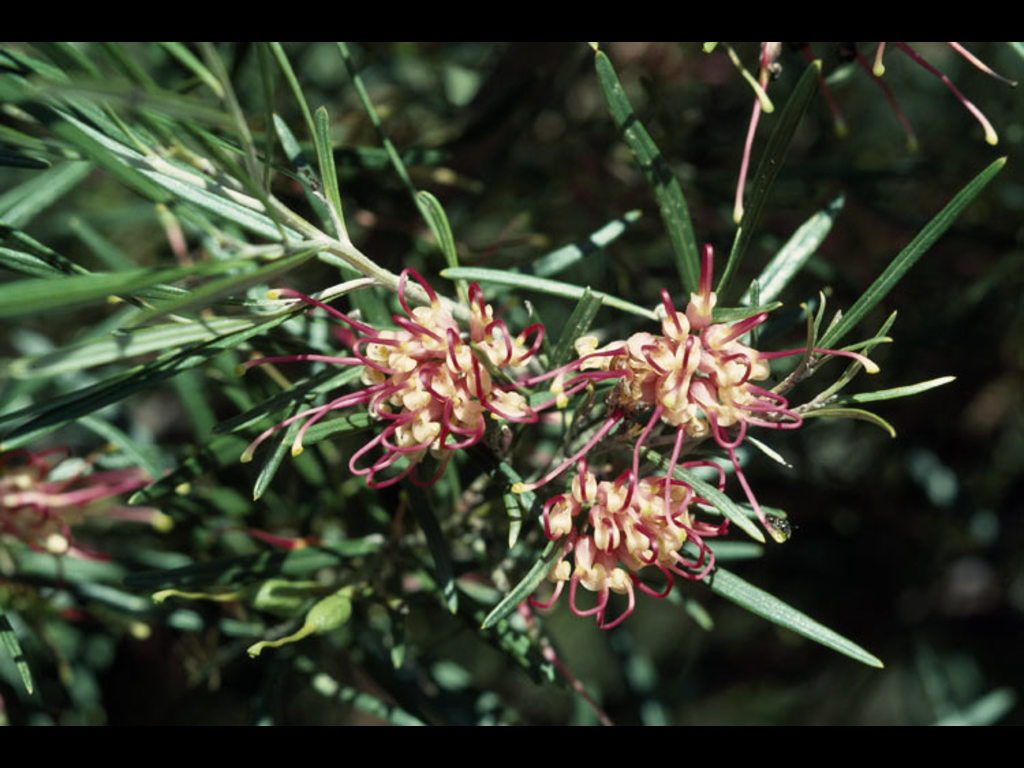Grevillea 'Sid Reynolds'
- File Number
- 495
- ACRA Field Book Number
- 343
- Registration Date
- 16/10/1992
- Application Received
- 25/07/1991
- Family
- Proteaceae
- Cultivar Name
- Grevillea 'Sid Reynolds'
- Origin
- Arose as a seedling in the garden belonging to Sid Reynolds. It is thought to be a hybrid between Grevillea pinaster and G. commutata. It has been marketed by John Rose of Forest Natives. The specimen was originally sent for identification by Noel Jupp and registration was sought by ANBG.
- Characteristics
- A dense, rounded shrub 2-2.5m high and wide with dull grey-brown bark on trunk and branches, branchlets with an appressed silvery indumentum. Leaves entire, linear-lanceolate 40-67mm long, 2-3mm wide, margins shortly revolute. Upper surface glabrous green, lower surface with a fine appressed silvery indumentum. Venation not prominent except for midvein, particularly on lower surface. Flowers in erect on occasionally decurved terminal inflorescences, on short lateral branchlets or occasionally axillary, within the foliage; simple or occasionally branched, c. 3cm long, 5cm wide. Floral branches covered in matted white hairs. Perianth with scattered appressed white hairs outside, glabrous inside except for a dense heard just before the curve of the limb; 7-8mm long, 2-3mm wide. Pistil 23-26mm long, glabrous, stipe 4-5mm long, pollen-presenter lateral. Diagnosis: Characterised by the large, dense rounded habit, and profuse pale red and pink flowers with a yellow limb. Differs from the parent G. pinaster in its larger, more robust habit, its longer and broader leaves (to 67mm long x 3mm wide) and its far more profuse and larger inflorescences. (Other parent uncertain but possibly G. commutata.)
- Cultivation
- Hardy subtropical areas. Suitable for well drained soils. Best in a sunny site but will tolerate some shade. Frost resistant to -6C. Responds well to pruning.
- Publication
- Wrigley, J.W. & Fagg, M. (2003), Australian Native Plants: cultivation, use in landscaping and propagation Edn. 5: 349
- Colour Coding
- RHS Colour Chart 1966Style: Yellow green group 154APerianth lower and tip: Red group 52C, yellow 1DPollen presenter: Red group 52B
- Propagation
- Cuttings from semi-firm new growth
- Applicant Name
- N Jupp
- Uses
- As part of a mass planting or mixed in a shrubbery, or as a spectacular feature plant. Attracts nectar feeding birds.
- Availability
- Specialist native plant nurseries
- ANBG Accession Numbers
- ACC495; ACRA343; CBG9104002.
- NSL ID
- -

